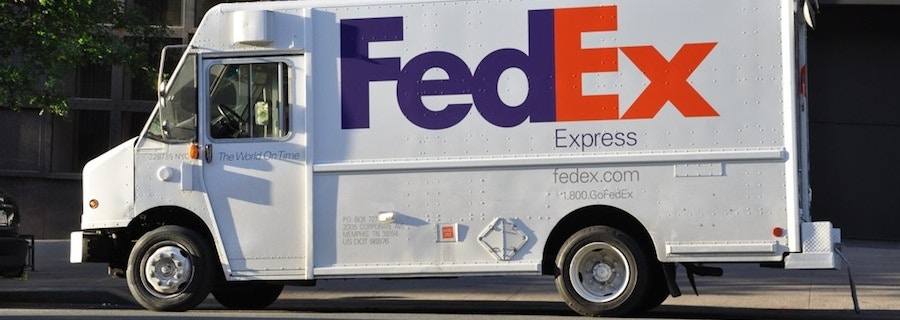Business
Subscription Business Model: Using it in Your Business
Dodd Caldwell
July 21, 2020

One way to drive dependable, recurring revenue for your business is through the subscription business model. Let’s say you already have a product to sell. Yeah, you can sell your product as a one-off purchase and that’s great, but that sale may not necessarily drive dependable, recurring revenue. According to Bloomberg Businessweek, by the year 2015, more than 40 percent of all media and digital-products companies will be using the subscription business model. This same trend has now carried over to physical products and is a burgeoning industry.
What You Should Know About the Subscription Business Model
Before going into the details of the subscription business model, it’s good to familiarize yourself with the benefits of having such a business. Below are just a few.
Increases Your Brand Loyalty
Most small online businesses strive for brand loyalty, but very few achieve it. Great inbound marketing strategies and an excellent social media marketing campaign will get you noticed, but how can you get your one-time customers to become repeat shoppers? An online subscription business may be the answer. Customers who love your products can sign-up, receive your product every month, and not have to worry about coming back to your site again and again.
Offers Predictable Revenue
If you have 5,000 subscribers paying $10 month every month, you know you’re making $50,000. If you’re looking to take on investment or take out a loan in order to expand your business in the near future, having subscriptions looks better on your books as it helps lenders to easily calculate your future projected revenue.
Provides Accurate Inventory Estimates
Knowing how much of your stock you’re going to sell in the next 30-days, helps you to not over-stock or run out of your product too soon. You’ll know exactly what you have to ship out a month ahead of time, so in essence, you’ll already know how much you’ve sold before any new orders are placed.
Improves Customer Relationships
Most successful companies understand that giving customers what they want and need is the way to develop strong customer relationships. However, non-subscription based-businesses rely on site visits and surveys for information. Listening to your customers’ feedback and paying close attention to your subscriptions could help you know who to target, what to target them with, and when to target them.
Eliminates Worries About Conversion Rates
Although conversion rates (the percentage of customers who come to your site and actually purchase) are important to most online businesses, they don’t have to be as critically important for subscription-based businesses. Subscription businesses can afford to have lower conversion rates, thanks to the fact that recurring subscriptions increase the lifetime customer value for each customer. They aren’t as dependent on making that one sale.
What Makes the Subscription Business Model Different from other Business Models?
Under the traditional one-off ecommerce model, selling your products to “potential” customers invokes a bit of worry. Will the customer return? How much will they spend? To determine what you’ll make the next month, you’ll have to calculate your estimated growth and your past month’s revenue. Since the numbers will always fluctuate from what you’ll actually make, you’ll have to work with your marketing team to devise a way to retain your customers; thus creating a more stable estimate. You can eliminate all of these headaches with the subscription business model.
Because under the subscription business model, a business sells scheduled periodic shipments and not individual products, your customers must pay for a subscription to access your inventory. That means there’s more exclusivity with your products. For instance, you could offer special deals and exclusive products made only available to “members” who have signed up for your subscription.
One of the reasons the subscription business model is so popular among consumers is that it gives the consumer the option to lock in set prices and discounts. They already know the prices of the products and they’re aware that these prices are likely to stay the same. Consumers are able to budget when they know how much something will cost in advance.
Before Getting Started
In order to make sure you’re prepared to use the subscription business model in your business, there are three things you’ll need to keep in mind: your subscription type, your website, and your payment system.
The Subscription Type
Take a look at your business plan and consider your customer’s needs, then decide whether you want a fixed-term or an evergreen subscription model. A fixed-term subscription is offered on a fixed time period, say 6-months or 1 year. The subscription stays intact until the stated end-date, and it’s up to the subscriber if they’d like to subscribe again after the term is over. An evergreen subscriber will be charged monthly or weekly until they cancel the subscription since there isn’t an established end-date. Most subscription businesses go for the latter.
The Website
In today’s competitive environment, great usability and design is a must. Take the time to make sure you’re website clearly communicates what you offer and the value you bring. You may also want to think about the mobile experience of your website. By making your website “responsive,” anyone visiting you site on a mobile device such as an iPad, iPhone, or Android will still be able to more easily navigate and read your website.
The Payment System
Payment systems have traditionally been a headache for companies in the subscription business model. That’s not the case any longer. There’s no need to setup a merchant account and gateway, implement security measures, pay for expensive and difficult to use software, and then hire a programmer in order to implement it. With MoonClerk, you can accept recurring payments on your website in as little as 10 minutes. And, MoonClerk will work for your customers on their smartphones, tablets and computers.
Photo by Flickr user ErikLeenaars


